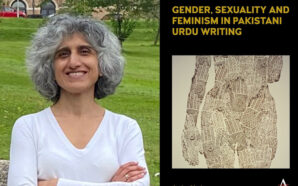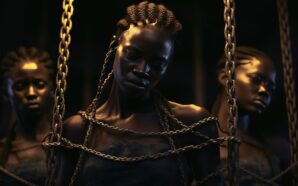How does one begin to describe the plight of orphans around the world?
To date, there is an estimated 150-153 million of them globally, with about 56 million of them in Sub-Saharan Africa, 5.5 million in MENA, 26.9 million in East Asia and the Pacific, 40.8 million in South Asia, 6.8 million in the former USSR, and 7.8 million in Latin America and the Caribbean. However, around 1.2 million trafficked children, 150 million street children worldwide and tens of thousands of child soldiers remain undocumented.
In Mozambique alone, in a population of around 25.8 million, 8 percent are orphans.
Mozambique is the place where the story of Swiss national Barbara Hofmann and the children’s charity she founded way back in 1990 called the “Association en faveur de l’Enfance Mozambicaine” (ASEM) or “Association for the Children of Mozambique” begins and continues.
Barbara always says how she came to Mozambique by accident or simply because of fate or destiny. After all, she had been thoroughly immersed in her career as a financial management and administration executive involved in the banking sector and multinational businesses in Geneva. But after the stock market crash of 1987, her career path led her to Mozambique, to a job she did not like… only to return because of what she witnessed.
“I resigned from my job, but I was determined to return to the country after seeing the sorry plight of the children,” says Hofmann. As far as Barbara was concerned, it was a done deal, settled in her mind, so she approached the Mozambican government to tell them about her objectives. But because she was just one person with no formal entity to represent, the government said “no.” She then faced the challenging task of setting up her own children’s charity.
Back in Switzerland, Barbara began to work in earnest to set up an organization based in Mozambique, to help orphans and less privileged children. She sold off all her assets and returned to Beira, Mozambique in 1990 to set up the Children’s Centre after getting all the necessary paperwork done.
She set up the not-for-profit charity (ASEM Swiss), and started a “soup program” even while the civil war was still raging in 1991. Severe droughts hit the country from 1991 to 1993, with only 2 centimeters of rainfall in three years in Beira. For the feeding program to continue, Barbara had to find a dedicated water source. ASEM was granted access to a well and was able to produce 300 liters of soup per day to feed 300 children. Not enough… never enough.
The ongoing civil war tore families apart and there were many orphans roaming the streets. People lost their homes, and were sick, hungry, and some were dying.
Such was the desperate state of affairs surrounding Barbara and her infant project ASEM. Permanent shelter became another challenge when Barbara took fifteen orphans under her wing. She had to beg people and restaurants to donate grains and vegetables, whatever they could, to help with the soup rations. In 1993, Barbara got a piece of land where four tents were set up: two as sleeping quarters, one for schooling and another for storage.
Towards the end of 1993, after a truce was declared, the Italian (Alpini) UN troops present in Beira collected money to fund the board and lodging of 80 children in the center There was also enough funds to enroll 120 children as day scholars and they were given three meals a day. The Alpini built the Macurungo Centre – comprising a dormitory, kitchen and school building made of locally sourced materials. Soon the number of residents soared to 170, with many more enrolling in the school.
Hofmann was able to found and organize ASEM Portugal in 1995, and by 1996, ASEM was capable of building another school (ASEM Manga School) 20 kilometers from the town center. A second center (Manga Centre) was constructed in 1998.
With the high demand for shelter, it was not long before the Macurungo Centre became overcrowded. Over 2,000 plates of food were served to children every day, says Hofmann. ASEM had to push ahead to provide the needs of an ever-increasing number of destitute and orphaned children.
 Even when the original plan was for ASEM to serve as a “transition center” for children prior to reintegration, refusal of a child was never an option, no matter how difficult the conditions were. Eventually, some of the children were reunited with their families, but some stayed with ASEM for 15 years. By 1999, Barbara was able to organize ASEM Mozambique and co-create the Foundation of ASEM Italy Onlus.
Even when the original plan was for ASEM to serve as a “transition center” for children prior to reintegration, refusal of a child was never an option, no matter how difficult the conditions were. Eventually, some of the children were reunited with their families, but some stayed with ASEM for 15 years. By 1999, Barbara was able to organize ASEM Mozambique and co-create the Foundation of ASEM Italy Onlus.
Barbara contracted cerebral malaria in 2001 and ended up in a coma for a month in a hospital in Johannesburg, South Africa. But clearly, Barbara’s task was still unfinished, and she miraculously recovered even as full rehabilitation took about five years.
“I was nearly dead but something, someone pulled me back. I would have died if a friend had not helped me get the medical care I required. I owe my life to that friend… she was crying for me when I regained consciousness. When I realized I was alive, I felt like I had a new life. My purpose was ever clearer, and my spirit was stronger. I was physically weak but my heart beat with a greater purpose.”
“While I was recovering, my Mozambican staff took over and managed the ASEM centers in Beira and Gorongoza and did a wonderful job. All the years of work paid off. They learnt silently, and I am proud of how my staff took the reins and raced ahead,” says Barbara.
Beginning in 2007, the Mozambican Government took over in the payment of the salaries of ASEM teachers. The kids still receive educational support from ASEM, through its 100 percent Mozambican staff, with the exception of Barbara.
Towards the end of 2012, Barbara was invited to speak at TEDxAmsterdam Women, giving her a chance to speak about life in Mozambique, the vicious cycle of poverty and how children get severely victimized by circumstances, and, more importantly, to pose a challenge to the audience.
Barbara was also the recipient of THE ONE 2014 International Humanitarian Award for her charitable work. The award ceremonies were held in formal ceremonies in Hong Kong on June 12, 2014.
“If humankind would join hands, will there still be hands free to hurt, to beat, to kill, to rape? No. You may not know the person sitting next to you, and so it is with life out there. But do you realize that you just gave love to someone… and it is so easy. We can change lives, and we can be great to ourselves and to others just by holding hands. Dare to choose with an open heart…will you now dare to open your eyes, take your key and follow your mission?”
Barbara was also the recipient of THE ONE 2014 International Humanitarian Award for her charitable work. The award ceremonies were held in formal ceremonies in Hong Kong on June 12, 2014.
Work in ASEM continues as Barbara and the various ASEM teams across the globe realize the formidable challenges orphans still face and the need to keep rebuilding lives.
ASEM is already a registered charity in Canada, Switzerland, Italy and Mozambique. ASEM USA is currently in the process of being organized.
For more details about ASEM and its projects, please visit their website: www.asemworld.org or send an email to Barbara: barbara.asem@gmail.com
About the writer
Claire Dangalan is a Filipina freelance feature writer (a.k.a. Lovely Claire Cachuela) based in Dubai. She is a consummate lover of the arts, especially literature. She taught Cultural Anthropology, Sociology, Humanities and Literature back in the Philippines. Her interests, aside from writing, include the environment, health and fitness, culinary arts, social issues, studies on world view, and “unprofessional photography.”
To connect or read more from Claire:
Blog: Faeriequeenbuknoy
Blog: Enthymememy
Facebook: Reduce your CO2 footprint
Twitter: Alice Red Queen
Twitter: Red CO2 Footprint












